This website is best viewed on a PC.SPECIAL ALAPAHA QUALITIESOf the many endearing qualities that make an Alapaha so special, such as their loving and affectionate demeanor towards its people and other comrades they may share their home with, along with their goofy antics and having a playful nature just to name a few. However, aggression is not one of them! They possess the ability to read a situation before reacting, having the mental capacity to approach any given circumstance in a calm manner, and the awareness to settle if a would-be threat ends up being one of your children's friends, for instance. It's these attributes that make them an excellent guard dog with a stable temperament and not a liability. To us, They're just a loving puppy in a big dogs body that wants nothing more than our affection and approval. When we let them, they will gladly climb onto one of our laps, given having a 75 - 90+ pound dog in our lap isn't the easiest feat to achieve depending on who it is, lol! No matter what the task is at hand, they are always alert to their surroundings and very protective, keeping a watchful eye. Jack's silly side, lol! They love the attention from our kids' friends!
0 Comments
This website is best viewed on a PC. WHICH TYPE CRATE & SAFE BEDDING SHOULD I USE?
|
This website is best viewed on a PC.
***WARNING! Mid America Pet Food has voluntarily recalled all the pet food brands it manufactured with a best by date before 10/31/2024, which include Victor, Eagle Mountain, Wayne Feeds and two varieties of Member's Mark pet foods. These products include both dog and cat foods and were sold nationwide in retail stores and online.
CDC reports that, as of November 1, 2023, seven people infected with the strain of Salmonella have been reported from seven states (see map). Six of seven cases reported were in children one year of age or younger. Five of these cases reported exposure to dogs and three reported feeding Victor pet food to their pets.***
CDC reports that, as of November 1, 2023, seven people infected with the strain of Salmonella have been reported from seven states (see map). Six of seven cases reported were in children one year of age or younger. Five of these cases reported exposure to dogs and three reported feeding Victor pet food to their pets.***
By three weeks of age we start introducing the puppies to moistened puppy kibble, along with still getting their mothers milk, and slowly tapering them off of her until they are completely weaned by seven weeks of age. Upon reaching seven weeks they are eating dry puppy kibble specifically formulated for Large Breed Puppies, three times daily until they are full during each feeding. By eight weeks of age your puppy will start out eating approximately 1.5 to 2 cups with each of their three feedings. We feed a premium puppy kibble so there is no need for adding supplements to their diet. You always want to insure that your new Alapaha puppy has gotten their fill, and not sniffing around, licking at the bowl, searching for more! They will not overeat. This breed is not prone to bloating.
Underfeeding your puppy could lead to behavioral problems.
*By regulating their feedings, this also helps to make their bowel/bladder movements much more predictable, and aids with housebreaking.*
Make positive the puppy kibble has the Nutritional Adequacy Statement pictured below, set by the AAFCO Association of American Feed Control Officials for Large Breed Puppies. Read more on this topic- Rapid Growth Rate-Myths VS Facts
From our research we have decided to switch to these particular formulas/brands listed below for our dogs/puppies. All made in the USA. Diamond Naturals, and their Large Breed Puppy, Country Vet Naturals, and Beaverdam Pet Food brands. They are Non-GMO, free of by-products with zero artificial colors, flavors, preservatives, potatoes in any form, peas, lentils, legumes and gluten-free grains- No corn, wheat, soy.
We will switch up on occasion for variety with our adults, and only with AAFCO approved, comparable brands.
*The FDA warns against the possible link to DCM (Dilated Cardiomyopathy) in dogs fed a grain-free diet with Ingredients Containing - Potatoes in various forms, Lentils, Peas, and other legume seeds.* Read Article: FDA Investigation into Potential Link between Certain Diets and Canine Dilated Cardiomyopathy
*Our dogs are very active! We are fortunate enough to allow them hours of free play outdoors, where they play tug, run around chasing each other, and exploring the property, etc. Because of their high activity level we like to give our adult dogs free choice of dry kibble only, no wet food, as they are maintaining a consistent, healthy weight, and we will adjust this accordingly depending on age, and activity level down the road. Otherwise, we would suggest around One year of age with average to moderate activity feeding adult large breed dry dog food two times daily.
*Canned food can cause tooth decay over time*
Note: For training we will use their dog food, Cloud Star Tricky Trainers Crunchy Liver Flavor Treats, Freeze dried natural treats, and occasionally small pieces of raw or steamed cauliflower. No table scraps. Ice cubes are a favorite treat too they all come running when they hear that ice maker! See our blog on "Dangerous Treats".
Underfeeding your puppy could lead to behavioral problems.
*By regulating their feedings, this also helps to make their bowel/bladder movements much more predictable, and aids with housebreaking.*
Make positive the puppy kibble has the Nutritional Adequacy Statement pictured below, set by the AAFCO Association of American Feed Control Officials for Large Breed Puppies. Read more on this topic- Rapid Growth Rate-Myths VS Facts
From our research we have decided to switch to these particular formulas/brands listed below for our dogs/puppies. All made in the USA. Diamond Naturals, and their Large Breed Puppy, Country Vet Naturals, and Beaverdam Pet Food brands. They are Non-GMO, free of by-products with zero artificial colors, flavors, preservatives, potatoes in any form, peas, lentils, legumes and gluten-free grains- No corn, wheat, soy.
We will switch up on occasion for variety with our adults, and only with AAFCO approved, comparable brands.
*The FDA warns against the possible link to DCM (Dilated Cardiomyopathy) in dogs fed a grain-free diet with Ingredients Containing - Potatoes in various forms, Lentils, Peas, and other legume seeds.* Read Article: FDA Investigation into Potential Link between Certain Diets and Canine Dilated Cardiomyopathy
*Our dogs are very active! We are fortunate enough to allow them hours of free play outdoors, where they play tug, run around chasing each other, and exploring the property, etc. Because of their high activity level we like to give our adult dogs free choice of dry kibble only, no wet food, as they are maintaining a consistent, healthy weight, and we will adjust this accordingly depending on age, and activity level down the road. Otherwise, we would suggest around One year of age with average to moderate activity feeding adult large breed dry dog food two times daily.
*Canned food can cause tooth decay over time*
Note: For training we will use their dog food, Cloud Star Tricky Trainers Crunchy Liver Flavor Treats, Freeze dried natural treats, and occasionally small pieces of raw or steamed cauliflower. No table scraps. Ice cubes are a favorite treat too they all come running when they hear that ice maker! See our blog on "Dangerous Treats".
Pictured Below On the Bag We Feed Our Puppies
Nutritional Adequacy Statement
Nutritional Adequacy Statement
|
Diamond Naturals Large Breed Puppy Formula Dry Dog Food
Available Online: Chewy, Petco & Tractor Supply. For Puppies Only- Made In USA- Recipe made from pasture raised lamb with probiotics, Gluten-Free Grains, Non-GMO, No corn, wheat, soy, filler, artificial flavors, colors, by-products, preservatives, and no peas, lentils, legumes or potatoes. Puppies Only. 40# Bag
DIAMOIND NATURALS ADULT BEEF MEAL AND RICE FORMULA DRY KIBBLE.
Available Online: Chewy, Petco & Tractor Supply. Suggest Only Adults- Made In USA- Has Probiotics, and Free of corn, wheat, soy. Non-GMO, Gluten-Free Grains, No potatoes in any form, peas, lentils or legumes, artificial colors, flavors or by-products. 40# Bag
Country Vet Naturals 28/18 Healthy Puppy Dog Food. All Life Stages
For Puppies and Adults- Made In USA- Non-GMO, No corn, wheat, soy, and no potatoes, peas, lentils, legumes, fillers or artificial flavors, preservatives, dyes or by-products. 35# Bag |
Diamond Naturals Large Breed Adult Chicken & Rice Formula Dry Dog Food.
Available Online: Chewy, Petco & Tractor Supply. Suggest Only Adults - Made In USA- Has Probiotics, and Free of corn, wheat, soy. Non-GMO, Gluten-Free Grains, No potatoes in any form, peas, lentils or legumes, artificial colors, flavors or by-products. For Adult Dogs. 40# Bag
Diamond Naturals Chicken & Rice Formula Dry Dog Food. All Life Stages
Available Online: Chewy, Petco & Tractor Supply. Suggest Only Adults- Made In USA- Has Probiotics, and Free of corn, wheat, soy. Non-GMO, Gluten-Free Grains, No potatoes in any form, peas, lentils or legumes, artificial colors, flavors or by-products. 40# Bag
|
***See detailed Puppy Stages Progression Photos, Potty Training and Feeding***
|
|
This website is best viewed on a PC.
*Toys Mainly For Adult Alapaha's That Can Take A Chewing*
~See Puppy Supply Basics for Puppy Toys, Food, Crate and Items We Use~
Just a few toys we've found through our experience that can stand up to their chewing! This breed likes to chew. It's best in our opinion, to not give your puppy toys that look like shoes or items that you wouldn't actually want them chewing on. Puppies grow fast, and we suggest getting the largest size available for your new puppy at 8 weeks to adult. *We choose not giving our dogs rawhides/pig ears or knuckle bones, etc., for risk of being a choking hazard. Giving them these types of treats/chews, will almost always leads to them not being interested, and refusing the safer bones/antlers, and other types of toys, because they can not compete with those types of flavor basted chews, and bones. The types we use listed below, can last ours a long time.
We have not experienced any of our dogs breaking off or chipping their teeth with any of the toys we have suggested here.
This being a working breed, their mouth is like our hands and they LOVE to chew and carry things around. Ours like variety and these toys help keep them from boredom so they stay happy, and satisfied especially on their downtime.
*I like to add to this from time to time once I feel the toys are tried, and true from our experience with all of our dogs in our opinion!*
~See Puppy Supply Basics for Puppy Toys, Food, Crate and Items We Use~
Just a few toys we've found through our experience that can stand up to their chewing! This breed likes to chew. It's best in our opinion, to not give your puppy toys that look like shoes or items that you wouldn't actually want them chewing on. Puppies grow fast, and we suggest getting the largest size available for your new puppy at 8 weeks to adult. *We choose not giving our dogs rawhides/pig ears or knuckle bones, etc., for risk of being a choking hazard. Giving them these types of treats/chews, will almost always leads to them not being interested, and refusing the safer bones/antlers, and other types of toys, because they can not compete with those types of flavor basted chews, and bones. The types we use listed below, can last ours a long time.
We have not experienced any of our dogs breaking off or chipping their teeth with any of the toys we have suggested here.
This being a working breed, their mouth is like our hands and they LOVE to chew and carry things around. Ours like variety and these toys help keep them from boredom so they stay happy, and satisfied especially on their downtime.
*I like to add to this from time to time once I feel the toys are tried, and true from our experience with all of our dogs in our opinion!*
|
Jolly Pets Teaser Ball-
Any Size! (8 "pictured) Our dogs have yet to destroy this or puncture it! They like carrying it around too. Below: Leia, playing with the Teaser Ball.
Leia, pictured above.
Blinky Babble Ball - Medium or Large
This Babble Ball is loud, and obnoxious! BUT, our dogs love this thing! They have not cracked it. However, after about a month (with our 5 playing with it) It doesn't make all the sounds.
Chuckit! MAX GLOW-L/XL.
This particular "Chuckit! ball", and there are a few different ones, poses no threat of choking and glows in the dark. Our dogs absolutely love it! Jack walks around flexing his jaws on it, while it makes a funny popping noise with it being hollow and flexible with a hole on both ends, he seems to really like that, lol. As long as your puppy/adult does not begin to chew on the hole openings on either side, then it can be practically indestructible!
Jack, with the Glow Ball
Nylabone Power Chew XL Dog Chew Toys for Aggressive Chewers
This one is pretty tough! Nylabone Dura Chew Ring Chicken Flavor
|
Petstages Deer Horn Long Antler Lasting Chew-L.
This withstands their chewing and lasts for months with all of ours chewing it, as do the other types we've listed. When the bones get worn down where they could possibly swallow one, we throw them away. We also keep a spare in the car and in their crates.
This withstands their chewing and lasts for months with all of ours chewing it, as do the other types we've listed. When the bones get worn down where they could possibly swallow one, we throw them away. We also keep a spare in the car and in their crates.
Lexy and Jack
Nylabone Power Chew Galileo Chew Toy-L/XL
This is Super Durable!
This is Super Durable!
Pet Qwerks Dinosaur BarkBone Real Bacon Dog Chew Toy-XXL-XXXL
They LOVE This one, and lasts months with our pack of 5!
They LOVE This one, and lasts months with our pack of 5!
Lexy with the XXXL
Lexy
The Antler Box-Premium Elk Antler Dog Chews (1 lb Bulk Pack) -Both Whole and Split Antlers-Long Lasting Organic Chewing Toys Sourced from Naturally Shed Antlers in The USA
Elk Antlers have the most trace minerals.
We suggest sz L or XL
Elk Antlers have the most trace minerals.
We suggest sz L or XL
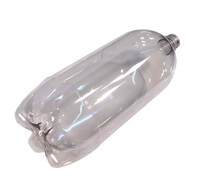
Plastic bottles without their caps or labels of course. They don't last long but they have a great time with them while it lasts, so keep an eye out for any signs of the plastic being punctured and then of course, THROW it away!
***See detailed Puppy Stages Progression Photos, Potty Training and Feeding***
This website is best viewed on a PC.
DOG TREATS AND DANGERS
TREATS: If you choose to buy any pet treats or foods made in China, you may be exposing your pet to serious danger. Some of the treats include: chicken jerky treats, chicken tenders, chicken strips, chicken treats and sweet potato treats. As a precaution, buy only food and treats made in the USA. Even though buying pet products made in the United States won’t eliminate all risk of ending up with tainted products, it can improve the chances of keeping your dog safe. Veterinarians are now reporting kidney problems linked to dogs consuming sweet potato and yam treats made in China. One of the types of rare kidney disorders is Fanconi’s Syndrome. If left untreated, Fanconi Syndrome can be fatal.
In 2007, the FDA become aware of an increasing number of ailments in pets associated from consuming Chinese produced jerky treats. Most of the complaints involved chicken jerky (treats, tenders and strips), but others include duck, sweet potato and treats where chicken or duck jerky is wrapped around dried fruits, sweet potatoes or yams. If your pet exhibits signs of distress after eating Chinese products, contact your veterinarian. It is advised that you save the treats and packaging for testing by the FDA to confirm or rule out if the product caused any disorder.
The FDA released a warning to dog owners informing them to avoid nonflavored and flavor basted dog bones. This was advised due to the fact of their potential harmful effects. Dog owners have reported that these bones caused gastrointestinal obstructions, blocked airways, internal bleeding, vomiting and diarrhea.
*Beware of Xylitol- Xylitol is reported to be 100 times more toxic to dogs than chocolate and causes an increase in insulin circulating through the dog's body. This may cause your dog's blood sugar to drop and lead to liver failure. Initial symptoms include vomiting, lethargy and loss of coordination. Eventually, the dog may have seizures and liver failure can occur within just a few days.
*Chocolate- Large amounts of chocolate and cocoa products can kill your dog. The toxic component found in chocolate is called Theobromine, which dog’s process much slower than humans and this causes a buildup of toxic levels in their system. Even just a small amount of chocolate, especially dark chocolate, can cause symptoms such as staggering, labored breathing, vomiting, diarrhea, tremors, fever, heart rate increase, abdominal pain, arrhythmia, seizures, coma and death. Chocolate also contains very toxic substances called methylxanthines, which are stimulants that stop a dog’s metabolic process. If your dog does ingest chocolate, contact a veterinarian and Pet Poison Helpline ASAP! The signs of sickness may not be visible for several hours even with death following within 24 hours!
*Cinnamon- While cinnamon is not actually toxic to dogs, it’s probably best to avoid it. Cinnamon and its oils can irritate the inside of dogs’ mouths, making them uncomfortable and sick. It can lower a dog’s blood sugar too much and can lead to diarrhea, vomiting, increased, or decreased heart rate and even liver disease. If they inhale it in powder form, cinnamon can cause difficulty breathing, coughing and choking.
*Eggs- Raw egg whites can give dogs biotin deficiency, so be sure to consult the advice of a licensed veterinarian before giving them or any food/treats to your pet you may be unsure about, for their health and safety.
*Fruits and Vegetables…Fruits- grapes, raisins, cranberries, persimmons, peaches and plums are especially dangerous treats for your dog. The problem with these fruits is the seeds and pits. Seeds from persimmons can cause inflammation of the small intestine and cause intestinal obstruction. Also, obstruction or choking is a possibility if a dog eats the pit from a peach or plum. More importantly, peach and plum pits contain cyanide which is poisonous to both humans and dogs. The difference is that humans know not to eat them. Dogs, unfortunately, do not. Other toxic human foods to dogs are onions, yeast dough, artificial sweeteners, avocados, alcohol and coffee.
*Macadamia Nuts- This is one of the most poisonous foods for dogs. They can cause vomiting, increased body temperature, inability to walk and lethargy. Even worse, they can affect the dogs' nervous system.
*Garlic- Like onions, chives, leeks and garlic, is part is five times more toxic to dogs than the rest of the Allium plants. Garlic can create anemia in dogs, causing side effects such as pale gums, elevated heart rate, weakness and collapse. Poisoning from garlic and onions may have delayed symptoms, so if you think your dog may have eaten some, contact your veterinarian.
*Ice Cream- Dogs do not digest dairy very well, and some dogs have a slight intolerance to lactose, a sugar found in milk products.
*Table Scraps- Feeding table scraps can cause many health issues for your pet. Feeding dogs scraps of food from the dinner table damages the health of pets as canine digestive systems cannot process food in the same way as humans. Dogs’ digestive systems cannot process food in the same way as humans, meaning certain foods normally classed as healthy could be toxic for a dog. Oily and fatty foods can lead to severe health problems such as diarrhea, vomiting and pancreatitis. Even worse, there are several people foods that are highly toxic to animals. Onions or any food prepared with them, for instance, can be unsafe for dogs and should never be given. Fat trimmings, cooked or uncooked can be an obvious cause of obesity in dogs. Fat trimmed from meat can cause pancreatitis. This can be painful and cause loss of appetite, lethargy, and dehydration. Feeding cooked bones to your dog such as leftover chicken or pork chop bones etc. is extremely risky as cooked bones can become a choking hazard and could splinter causing punctures and lacerations internally. Some dogs that are constantly fed with table scraps have the tendency to become dependent on them. Dogs that eat table scraps could start refusing to eat their regular dog food. Aside from that, feeding your pets the scraps can also cause undesirable behaviors such as the sneaking of food off of your plate while your back is turned. Granted, most dogs if given the chance will do this anyway unless they have been properly trained. However, if they already have a taste for it, this may encourage the behavior along with begging, which both can become very annoying.
Click on the highlighted word, "Dogs Health" and on the PET MD logo below, for more in-depth information on this topic.
In 2007, the FDA become aware of an increasing number of ailments in pets associated from consuming Chinese produced jerky treats. Most of the complaints involved chicken jerky (treats, tenders and strips), but others include duck, sweet potato and treats where chicken or duck jerky is wrapped around dried fruits, sweet potatoes or yams. If your pet exhibits signs of distress after eating Chinese products, contact your veterinarian. It is advised that you save the treats and packaging for testing by the FDA to confirm or rule out if the product caused any disorder.
The FDA released a warning to dog owners informing them to avoid nonflavored and flavor basted dog bones. This was advised due to the fact of their potential harmful effects. Dog owners have reported that these bones caused gastrointestinal obstructions, blocked airways, internal bleeding, vomiting and diarrhea.
*Beware of Xylitol- Xylitol is reported to be 100 times more toxic to dogs than chocolate and causes an increase in insulin circulating through the dog's body. This may cause your dog's blood sugar to drop and lead to liver failure. Initial symptoms include vomiting, lethargy and loss of coordination. Eventually, the dog may have seizures and liver failure can occur within just a few days.
*Chocolate- Large amounts of chocolate and cocoa products can kill your dog. The toxic component found in chocolate is called Theobromine, which dog’s process much slower than humans and this causes a buildup of toxic levels in their system. Even just a small amount of chocolate, especially dark chocolate, can cause symptoms such as staggering, labored breathing, vomiting, diarrhea, tremors, fever, heart rate increase, abdominal pain, arrhythmia, seizures, coma and death. Chocolate also contains very toxic substances called methylxanthines, which are stimulants that stop a dog’s metabolic process. If your dog does ingest chocolate, contact a veterinarian and Pet Poison Helpline ASAP! The signs of sickness may not be visible for several hours even with death following within 24 hours!
*Cinnamon- While cinnamon is not actually toxic to dogs, it’s probably best to avoid it. Cinnamon and its oils can irritate the inside of dogs’ mouths, making them uncomfortable and sick. It can lower a dog’s blood sugar too much and can lead to diarrhea, vomiting, increased, or decreased heart rate and even liver disease. If they inhale it in powder form, cinnamon can cause difficulty breathing, coughing and choking.
*Eggs- Raw egg whites can give dogs biotin deficiency, so be sure to consult the advice of a licensed veterinarian before giving them or any food/treats to your pet you may be unsure about, for their health and safety.
*Fruits and Vegetables…Fruits- grapes, raisins, cranberries, persimmons, peaches and plums are especially dangerous treats for your dog. The problem with these fruits is the seeds and pits. Seeds from persimmons can cause inflammation of the small intestine and cause intestinal obstruction. Also, obstruction or choking is a possibility if a dog eats the pit from a peach or plum. More importantly, peach and plum pits contain cyanide which is poisonous to both humans and dogs. The difference is that humans know not to eat them. Dogs, unfortunately, do not. Other toxic human foods to dogs are onions, yeast dough, artificial sweeteners, avocados, alcohol and coffee.
*Macadamia Nuts- This is one of the most poisonous foods for dogs. They can cause vomiting, increased body temperature, inability to walk and lethargy. Even worse, they can affect the dogs' nervous system.
*Garlic- Like onions, chives, leeks and garlic, is part is five times more toxic to dogs than the rest of the Allium plants. Garlic can create anemia in dogs, causing side effects such as pale gums, elevated heart rate, weakness and collapse. Poisoning from garlic and onions may have delayed symptoms, so if you think your dog may have eaten some, contact your veterinarian.
*Ice Cream- Dogs do not digest dairy very well, and some dogs have a slight intolerance to lactose, a sugar found in milk products.
*Table Scraps- Feeding table scraps can cause many health issues for your pet. Feeding dogs scraps of food from the dinner table damages the health of pets as canine digestive systems cannot process food in the same way as humans. Dogs’ digestive systems cannot process food in the same way as humans, meaning certain foods normally classed as healthy could be toxic for a dog. Oily and fatty foods can lead to severe health problems such as diarrhea, vomiting and pancreatitis. Even worse, there are several people foods that are highly toxic to animals. Onions or any food prepared with them, for instance, can be unsafe for dogs and should never be given. Fat trimmings, cooked or uncooked can be an obvious cause of obesity in dogs. Fat trimmed from meat can cause pancreatitis. This can be painful and cause loss of appetite, lethargy, and dehydration. Feeding cooked bones to your dog such as leftover chicken or pork chop bones etc. is extremely risky as cooked bones can become a choking hazard and could splinter causing punctures and lacerations internally. Some dogs that are constantly fed with table scraps have the tendency to become dependent on them. Dogs that eat table scraps could start refusing to eat their regular dog food. Aside from that, feeding your pets the scraps can also cause undesirable behaviors such as the sneaking of food off of your plate while your back is turned. Granted, most dogs if given the chance will do this anyway unless they have been properly trained. However, if they already have a taste for it, this may encourage the behavior along with begging, which both can become very annoying.
Click on the highlighted word, "Dogs Health" and on the PET MD logo below, for more in-depth information on this topic.
This website is best viewed on a PC.

There are so many poisonous plants out there, here is the link and the Top 10 Poisonous Plants to your pets!
This website is best viewed on a PC.
I wanted something unique. I thought Jack's coat looked similar to the color of moonshine. So, after doing a little searching, I came upon an article about moonshine. I found the legend behind the name to be very interesting! and that is how I came up with Jack's first name, Moonraker's.
: ) Thanks for reading!
Article Below:
: ) Thanks for reading!
Article Below:
MOONRAKER, MOUNTAIN DEW, MOONSHINE, OR WHITE
LIGHTNING? This article first appeared in the Coloradoan newspaper.
If it shed any light on the subject at all — and it doesn’t remotely — I might be tempted to elaborate on the actual term “moonshine,” and where it originated: i.e. rural England (circa 1780), when country smugglers hid illicit barrels of French brandy in shallow ponds in order to avoid the taxman but were discovered one fated summer night, when the moon shone down so brightly on the surface of the pond that it looked as if a wheel of cheese were floating there, and so these bootleggers told the taxmen that they were, in fact, raking the water not for contraband but for a creamy piece of that cheese.
This, however, is all rumor and rodomontade, easily sliced with an investigative blade.
It is in any case almost universally agreed that the term “moonshine” comes from the term “moonraker,” which in turn comes from this legend.
It is also generally agreed that moonshine — or white-lightning, if you prefer, or white-whiskey, or mountain dew — entered America in the early 1800’s, when Scots-Irish immigrants, who back home often made their whiskey without aging it, began settling the Appalachian region of America.
Yet the question remains: if many vodkas are essentially white whiskies, and if many whiskies made of corn mash are not moonshine, what, in the final analysis, is the distinguishing characteristic of moonshine?
The answer, it turns out, is this: illegality.
Moonshine, notorious for its high proof — frequently hovering around 190 (yowza!) — is any distilled spirit concocted in an unlicensed still.
That includes so-called splo, or bathtub gin, or the harrowing hooch confected by your next-of-kin.
Original Link:
MOONRAKER, MOUNTAIN DEW, MOONSHINE, OR WHITE LIGHTNING?
This, however, is all rumor and rodomontade, easily sliced with an investigative blade.
It is in any case almost universally agreed that the term “moonshine” comes from the term “moonraker,” which in turn comes from this legend.
It is also generally agreed that moonshine — or white-lightning, if you prefer, or white-whiskey, or mountain dew — entered America in the early 1800’s, when Scots-Irish immigrants, who back home often made their whiskey without aging it, began settling the Appalachian region of America.
Yet the question remains: if many vodkas are essentially white whiskies, and if many whiskies made of corn mash are not moonshine, what, in the final analysis, is the distinguishing characteristic of moonshine?
The answer, it turns out, is this: illegality.
Moonshine, notorious for its high proof — frequently hovering around 190 (yowza!) — is any distilled spirit concocted in an unlicensed still.
That includes so-called splo, or bathtub gin, or the harrowing hooch confected by your next-of-kin.
Original Link:
MOONRAKER, MOUNTAIN DEW, MOONSHINE, OR WHITE LIGHTNING?
Categories
All
AGH! Worms
Alapaha Qualities
Dangerous Treats
Dry/Raw/Canned...
Durable Toys!
Feeding Your Puppy How Much & How Often.
How Jack Got His Name
Lana Lou Lane Bloodline VS CRK Dogs
Living With An Alapaha
Merle And Brindle
Poisonous Plants
PREVENTING Soiling The Floor While Loose Indoors
Rapid Growth Rate Myths VS Facts
Temperament VS Personality
Unusual Southern Names
What Is Drive?
What Size Crate & Are Raised Feeders Healthy Or Harmful?
When To Spay/Neuter? Risks & Benefits
Archives
September 2021
July 2020
September 2018
March 2018
February 2018
January 2018
November 2017
October 2017
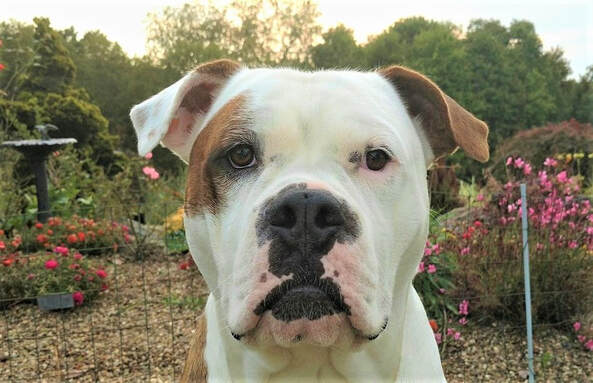
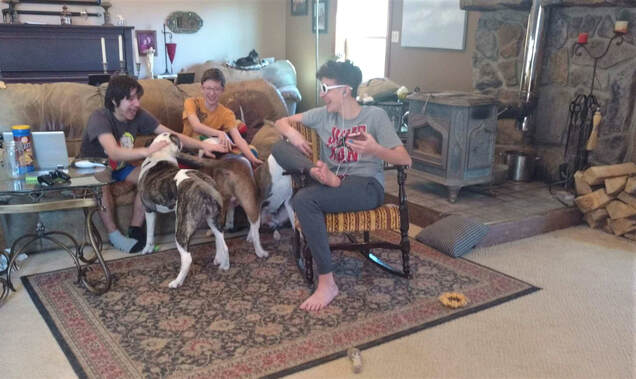
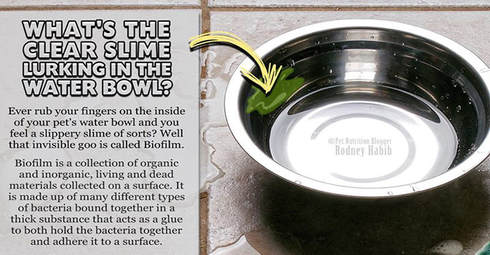
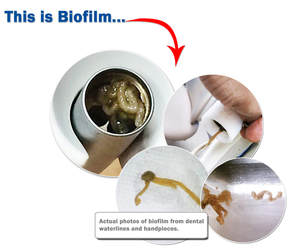

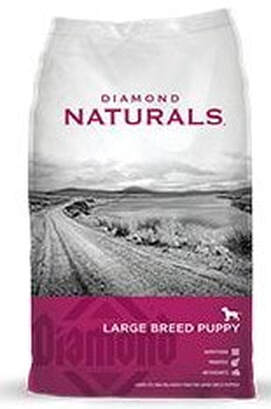

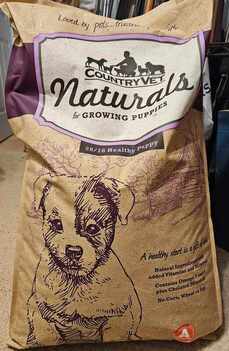


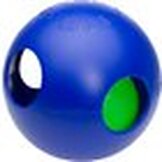
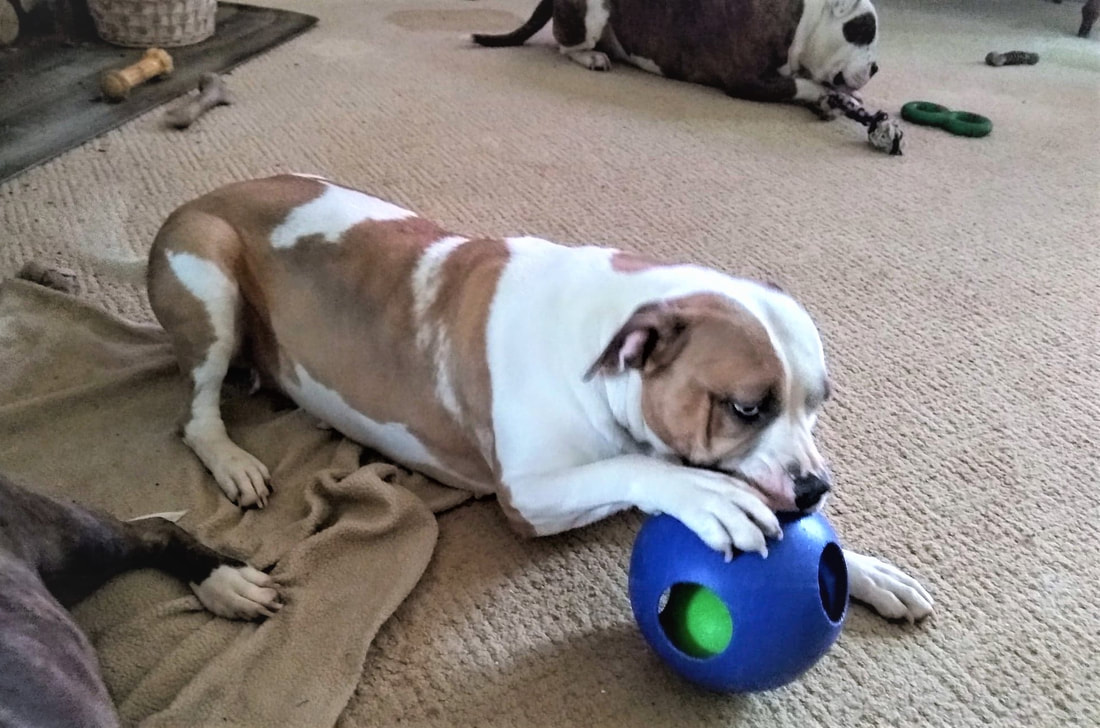
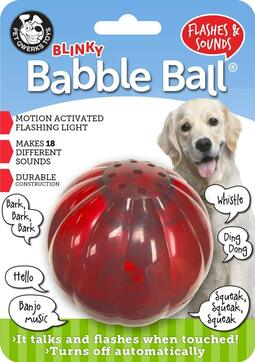
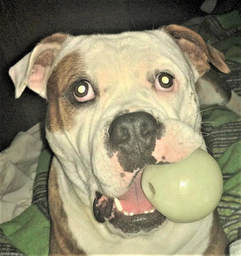
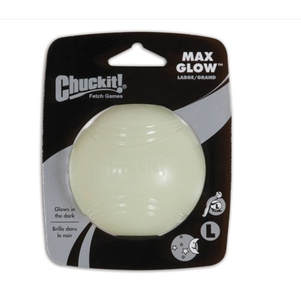
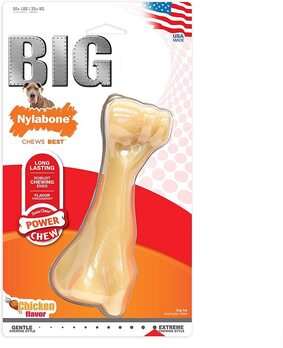
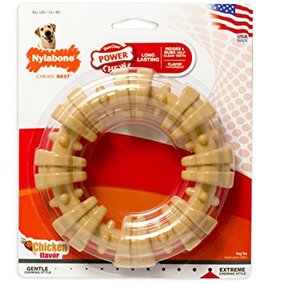
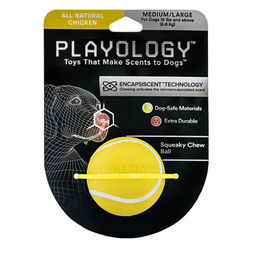
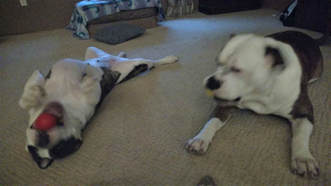
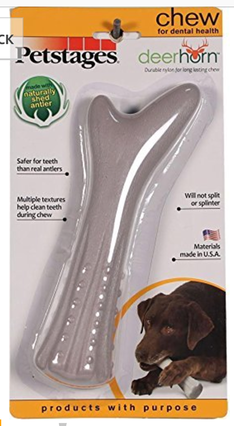
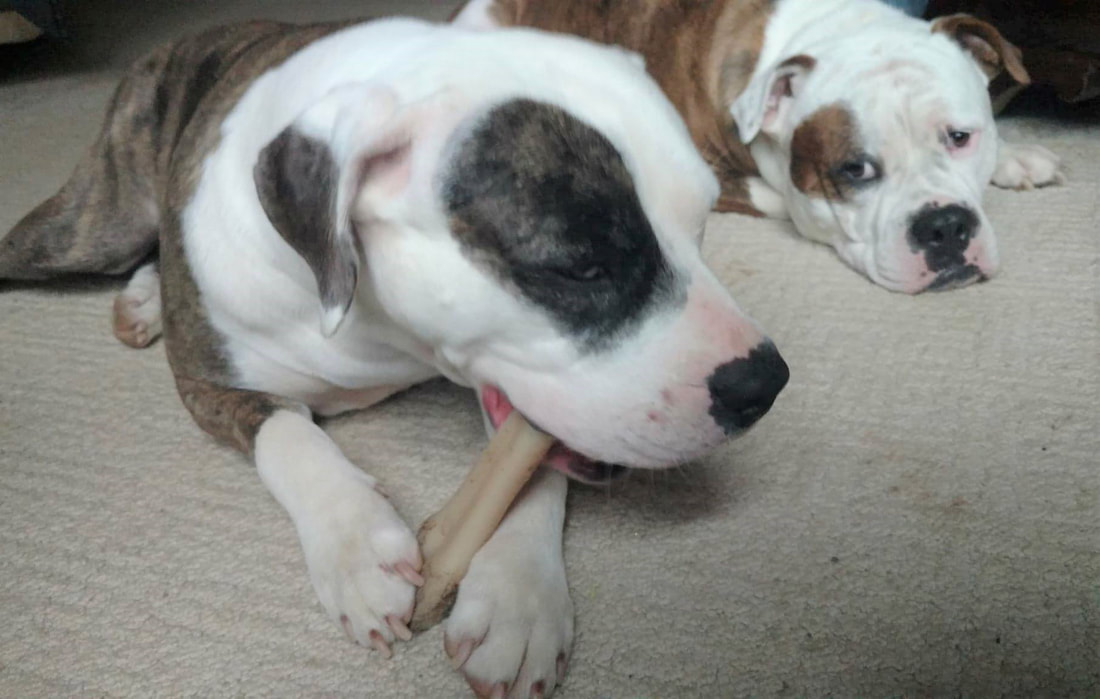
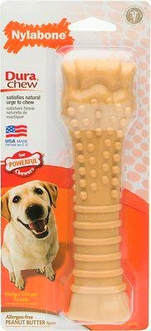
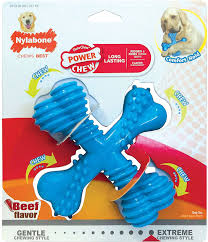
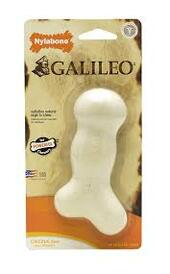
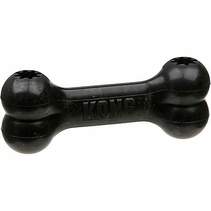
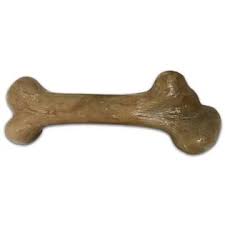
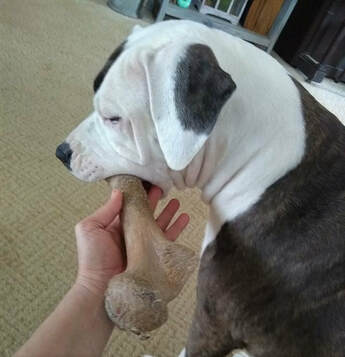
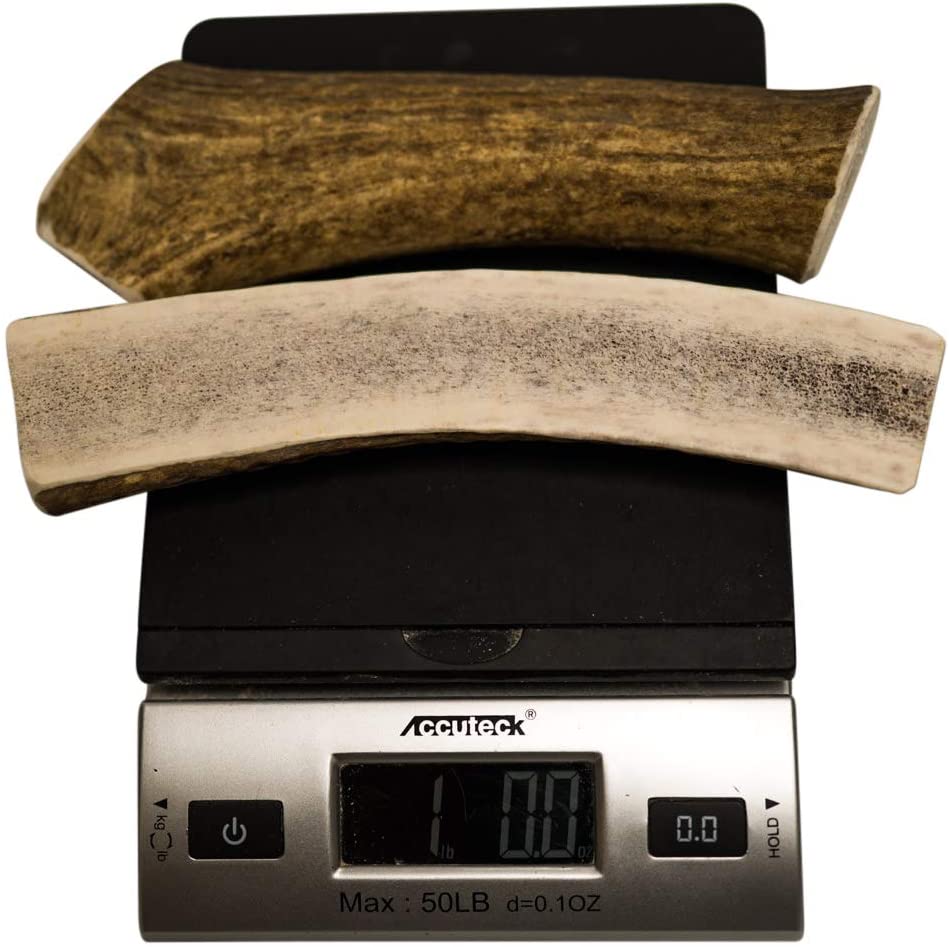


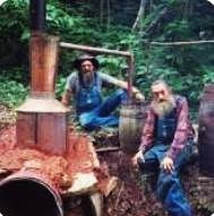
 RSS Feed
RSS Feed